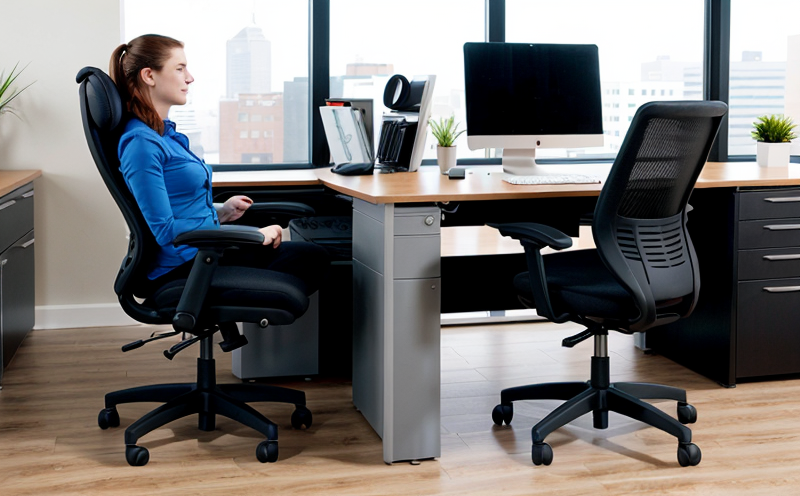ASTM E1590 Flammability Testing of Office Furniture and Upholstered Chairs
The American Society for Testing and Materials (ASTM) E1590 Standard Practice for Flame Retardant Test Specimens is a widely recognized international standard that sets the requirements for flame retardancy testing of upholstered furniture, including office chairs. This service ensures compliance with fire safety regulations by evaluating the flammability properties of materials used in these products.
The ASTM E1590 test method covers various types of seating furniture like office chairs, sofas, and other similar items that are made from combustible materials such as fabric or foam. The standard specifies how to prepare specimens according to the size requirements outlined by the relevant fire codes (e.g., NFPA 701). Compliance with this standard is crucial for manufacturers aiming to meet legal requirements set forth by government agencies.
The test procedure involves placing a lit candle close to the specimen and recording any flaming or smoldering behavior. The results are reported based on whether the flame spreads beyond an acceptable limit, indicating potential fire hazards. This information helps companies make informed decisions about selecting appropriate materials for their products while ensuring they comply with local and international safety standards.
By conducting ASTM E1590 tests early in the product development process, manufacturers can identify issues before mass production begins. Early detection allows them to implement necessary changes quickly, saving time and costs associated with rework or recalls later down the line. Additionally, it demonstrates a commitment to maintaining high standards of quality control.
For those involved in purchasing decisions within organizations like furniture retailers or corporate buyers, understanding these tests provides insight into manufacturer practices regarding fire safety measures. It also allows for more accurate comparisons between different brands when selecting products that best suit specific needs.
Benefits
- Enhanced Product Safety: Ensures compliance with national and international regulations, reducing the risk of product liability lawsuits due to non-compliance.
- Increased Consumer Confidence: Demonstrates a commitment to safety, which can enhance brand reputation among consumers who prioritize fire safety in their purchasing decisions.
- Potential Cost Savings: Identifying and addressing issues early through testing reduces the likelihood of costly recalls or product rejections during final stages of manufacturing.
- Improved Brand Image: Compliance with recognized standards like ASTM E1590 can help establish your company as a leader in quality control within the industry, attracting more customers.
Quality and Reliability Assurance
- Accurate Specimen Preparation: Ensuring that specimens are prepared according to ASTM E1590 specifications guarantees consistent results across multiple tests. This consistency is essential for reliable quality assurance programs.
- Standardized Testing Procedures: Adherence to standardized procedures ensures accurate assessment of flammability properties, contributing to more precise quality control processes.
The rigorous nature of ASTM E1590 testing contributes significantly to maintaining high levels of product reliability and safety. By adhering strictly to these standards throughout the manufacturing process, companies can ensure that their products meet or exceed all applicable regulatory requirements.
Use Cases and Application Examples
The ASTM E1590 flame retardant test is particularly relevant for manufacturers of office furniture and upholstered chairs. Here are some specific use cases:
- Office Chairs: Ensures that fabric used in office seating meets flammability standards, protecting employees from potential fire hazards.
- Sofas and Recliners: Provides peace of mind for consumers who purchase these items knowing they have been tested against strict safety criteria.
- Fabric Selection: Helps furniture designers select appropriate fabrics that will pass flammability tests, streamlining the design process while ensuring compliance with regulations.
In addition to protecting users from fire risks, this testing also plays a role in reducing insurance premiums for businesses by demonstrating proactive efforts towards safety. Insurance companies often look favorably upon companies that take extra steps to ensure their products are safe and comply with relevant standards.





